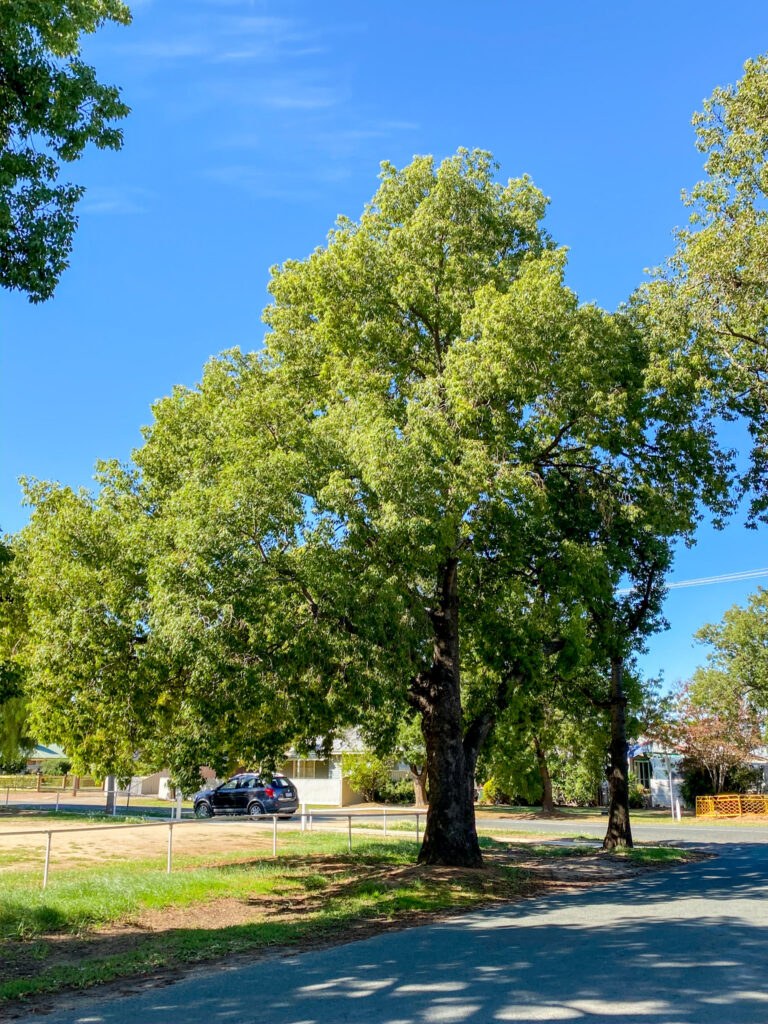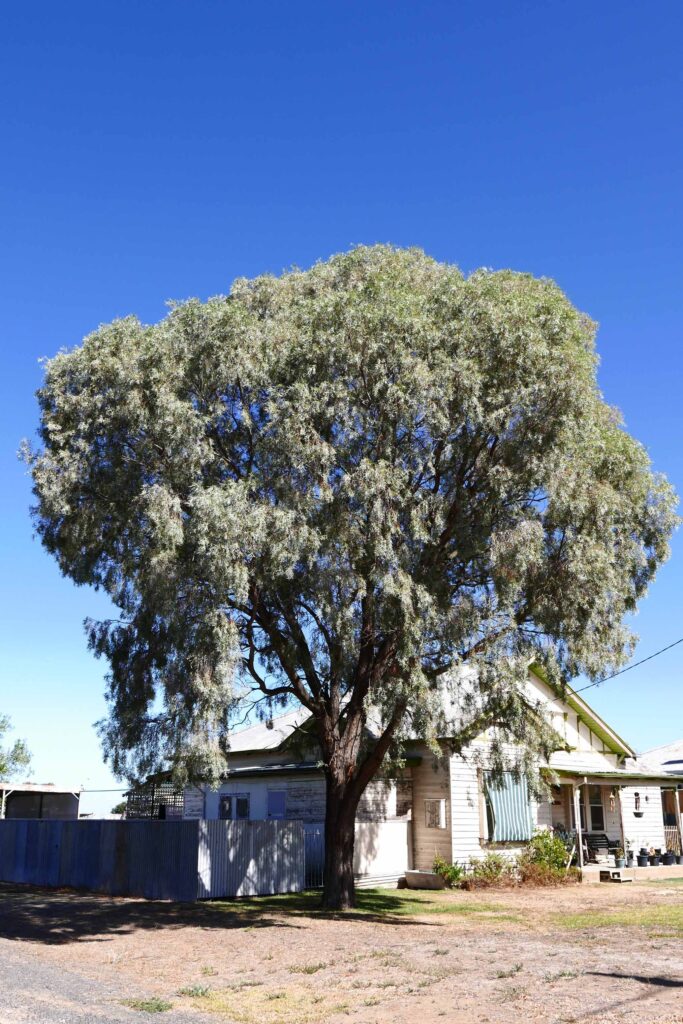
The urban environment and its inherent stress factors
Successful tree growth in urban environments is reliant on more than just species selection. It is about planting the right tree in the right location to achieve successful landscape outcomes.
In an increasingly challenging urban landscape, planning and infrastructure must support the tree taxa selections to ensure they have the adequate resources and suitable growing conditions in order to survive and thrive, and provide the aesthetic and environmental services expected of them (Diamond Head Consulting Ltd., 2017).
Trees in urban and city landscapes will always exist in locations that are prone to increasing urban growth. The additional stresses that urban environments impose on the performance of urban trees, temporarily, cyclically, or permanently, both above and below ground, are a fundamental issue for the sector.
Below ground stresses
In urban areas, natural soils have often been displaced and replaced with fill or imported soil. Soil structure of these non-natural soils is often compromised by compaction. Underground services exist at various depths within footpaths or roadways, with connections joining from every property. Altering soil levels can modify the natural flow of ground water. The various services and structures competing for below ground space effectively limit the volume of soil available to urban trees for root growth.
Ground level stresses
As cities grow and condense, the extent of impermeable surface increases, limiting the area of available permeable land. Growth and densification often results in the removal of existing trees and effectively limits the locations where new trees can be planted. Impermeable surfaces also reduce the amount of water and air that can infiltrate below ground to recharge soil moisture and to support healthy root growth and function (Diamond Head Consulting Ltd., 2017). There is a significant reduction in natural recycling of nutrients and a decrease in soil carbon levels. There is also the inevitable conflict between roots and hard surfaces that require constant maintenance, which often results in root disturbance or damage.
Above ground stresses
In urban areas, structures and overhead services, predominately electric power lines, limit the space available for tree canopy and can limit the amount of sunlight each tree receives. Tree canopies must also be suited to, or modified for, the site uses above ground, so that they do not inhibit the passage of people or transportation, or the delivery of overhead services. Microclimate challenges in inner city areas can be shaped by taller buildings that can produce urban canyons creating wind tunnel effects, rain shadows and shading.
Transient stressors
As has been pointed out, seasonal moisture deficits, extended droughts and heat can negatively impact growth, survival, and regeneration rates of trees.
In most parts of southern Australia, annual climatic moisture deficits typically occur over the summer season (November to March). This means that the precipitation falling is not enough to meet vegetation evaporative demand for water. When there is a climatic moisture deficit, moisture is needed from sources other than rain (i.e. groundwater or irrigation) to avoid drought impacts on plant growth. Site-specific factors such as aspect, soil water holding capacity, elevation and depth of water table influence the presence of site soil moisture that may compensate for climatic moisture deficits.
Seasonal climatic moisture deficits are relatively predictable on an annual basis, whereas declared drought is a more unpredictable, though still recurrent, feature of Australia’s climate. Droughts will be exacerbated by the permanent soil moisture deficits developed through the reduction in water table recharge that would occur through rainfall during the cooler months.
Heat
Heat impacts tree growth and survival both indirectly, by influencing evaporation rates affecting soil moisture availability, and directly, if exceeding the species-specific optimal temperature range for physiological processes.
The ability of the plant to cope with or adjust to the heat stress varies across and within species as well as at different developmental stages. Plants have evolved physiological, biochemical, morphological, and molecular responses to heat stress. For example, the expression of heat shock proteins (HSPs), is known to be an important adaptive strategy (Wahid, et al., 2007). The tolerance conferred by HSPs results in improved physiological processes such as photosynthesis, assimilate partitioning, water and nutrient use efficiency, and membrane stability. The improvements created by HSPs make plant growth and development possible under heat stress (Wahid, et al., 2007). However, there exists tremendous variation between and within species, in the expression of these proteins. Knowledge such as this provides prospects to improve plant heat-stress tolerance through selection and genetic means but there is still much research to be done.
Water
In planted urban landscapes, many trees grow surrounded by hard surfaces where they are subject to higher temperatures and more transpiration water loss than trees in parkland and open space areas. These harsh urban conditions can exacerbate moisture stress during climatic water deficits and extreme drought. It is common to compensate for the deficit of summer precipitation by providing supplemental irrigation to young street trees in the first 2-5 years after planting. As trees grow and develop an established root system, they become better equipped to tolerate drought, though tolerance varies by species (Diamond Head Consulting Ltd., 2017).
Whether moisture stress is induced by seasonal moisture deficits or by an extreme drought event, trees respond with strategies to avoid or tolerate the drought stress.
Avoidance involves strategies such as dropping leaves or rapidly closing stomata to reduce water loss from cell tissue. Tolerance involves strategies that slow the flow of water out of cells to reduce evaporative water loss and enable more efficient use of plant available soil water. With respect to the benefits the community seeks from the urban forest in the heat of summer, species with drought tolerance strategies are preferred because tolerant trees retain their canopy and continue to transpire water, consequently providing continuous shade and cooling benefits. During declared drought events, premature leaf-drop can be observed in some deciduous street tree species. This is likely due to the tree species’ drought avoidance strategies and, over that period of hot weather and for the remainder of the growing season, the trees will not provide the benefits for which they were planted (Diamond Head Consulting Ltd., 2017).
Understanding if a species is a water deficit tolerator or avoider is a critical selection criterion.
Tree selection in relation to urban environments
Tree managers usually have little control over these sources of stress but can improve urban forest resilience through planning, design, and management that:
- Selects a diversity of species that are tolerant of, or resistant to identified urban conditions.
- Provides planting infrastructure that supports adequate soil volume and soil moisture.
- Maximizes the permeability of ground surfaces.
- Implements appropriate best practice maintenance standards to develop healthy, structurally sound trees.
- Requires appropriate tree protection on sites where construction or maintenance activities occur.
- Reduces the potential for conflicts with urban site uses above, at and below ground level.
Complementary policies that adopt actions for rigorous plant selection, surface permeability, canopy coverage, available soil volume and that protect trees through design and during construction, can drive implementation and regulation of the above approaches (Diamond Head Consulting Ltd., 2017).

Part 3 of this series (next month) will explore the tree selection process using climate suitability modelling, plant traits and physiology, and the effects of the urban environment on tree growth.
References
Diamond Head Consulting Ltd. (2017) Urban Forest Climate Adaptation Framework for Metro Vancouver. Tree Species Selection, Planting and Management. Metro Vancouver
Wahid, A., Gelani, S., Ashraf, M., Foolad, M. R. (2007). Heat tolerance in plants: An overview. Environmental and Experimental Botany 61 (2007) 199–223
Stephen Frank
Director
Treelogic Pty. Ltd.
T: 03 9870 7700
E: Stephen.frank@treelogic.com.au
